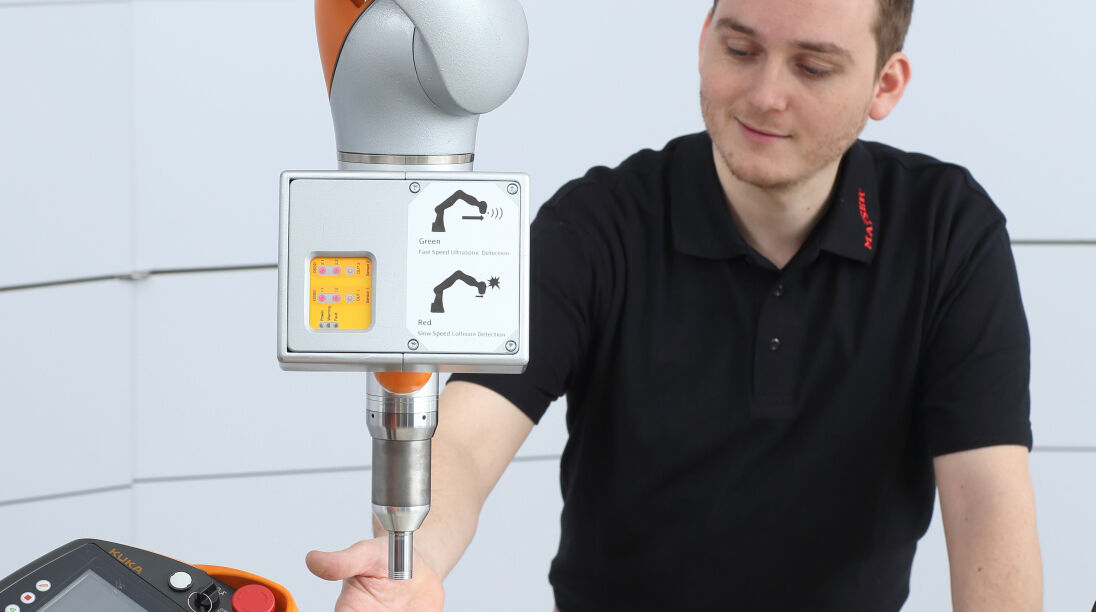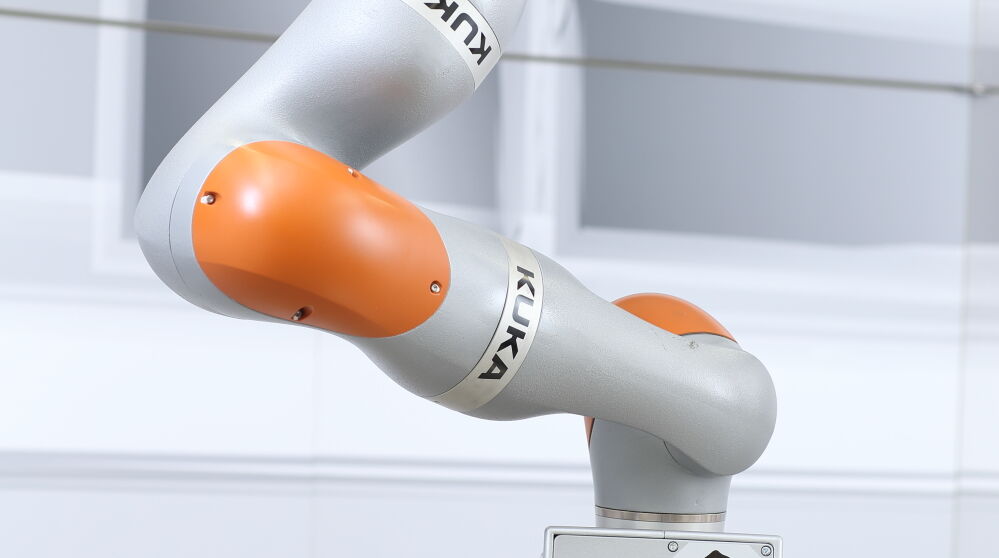Unique ultrasonic sensor for a safer collaboration
Ulm 8th February 2017 – The medium-sized company in southern Germany, whose company history ranges from the manufacture of hats to Industry 4.0, has developed a worldwide unique ultrasonic sensor that makes numerous areas of work and life of people safer. Among other things, Ultrasonic safety enables safe collaboration of humans and robots for Cobot applications and provides a functionally safe solution for the protection of tools and workpieces.
Self-driving cars, autonomous driving subways in Paris and London, driverless transport systems, fully automatic production lines – the number of automated processes in our professional and private everyday life is constantly increasing. But regardless of how much one optimises its process: The independently acting human remains the “weak point” of the system. In order to ensure the safety of humans despite the increasing level of automation, Mayser has developed and produced sensor solutions for personnel safety for 39 years now, such as currently the only functionally safe ultrasonic sensor in the world, Ultrasonic safety. Thomas L. Zawalski, Managing Director of Mayser, is very pleased about the ISO certification awarded for the ultrasonic sensor in February. “We set high standards across many areas, and with the new ultrasonic sensor, we assume the quality leadership in the area of safe human-robot collaboration. As a result, possibilities are opening up that never existed before now.”
Human and robot working in a team on a common goal
A central theme of Industry 4.0 is human-robot collaboration. In the intelligent factory of tomorrow there will still be people, however their work will be defined differently, more individual and more solution-oriented. Robots support humans in heavy and strenuous tasks such as constant overhead activities or in the transfer of supplied components. But what happens when an employee and a pointed tool clash? Without safety fences or other securing devices, which would however obstruct teamwork on an object, the robot can become a danger for the human. Non-touch protection devices such as capacitive or ultrasonic sensors offer one way out of this dilemma.
More efficiency due to higher speeds and cycle times
In February Ultrasonic safety from Mayser was approved as the first, and up to now only ultrasonic sensor worldwide for the safety of personnel in the industrial environment. The design of the evaluation unit enables the connection of up to two ultrasonic transducers as sensors, which in each case create a protection- and a warning field. In the warning field fast movements of the robot are allowed. That increases productivity and efficiency. If a screwdriver comes closer to a workpiece, the smaller protection field is activated. This recognises a person or an object and the robot is stopped or braked to a safe process speed.
Global companies in the robotics sector work with the sensor
The safe sensor technology of Ultrasonic safety can in future be implemented in various automated areas. Mayser sees many advantages for original equipment manufacturers (OEMs) in the robotics industry, system integrators and automation users due to the new sensor generation. Together with the global company KUKA, which is leader in the field of industrial robots, Mayser has realised an advance development for a reliable protection of tools and workpieces on a KUKA LBR iiwa.
Company history from hat manufacture to Industry 4.0
About 215 years ago the history of Mayser started with millinery. Nowadays individual and technological high-end solutions are developed for customers from a variety of industries – from the automotive industry to public transport and mechanical engineering. “We are a company with over 215 years of experience and have accompanied the economic development from industrialisation as milliner up to the present Industry 4.0. We will also develop innovative solutions in the future and therefore look forward positively to the next 200 years”, stated Managing Director Thomas L. Zawalski.






